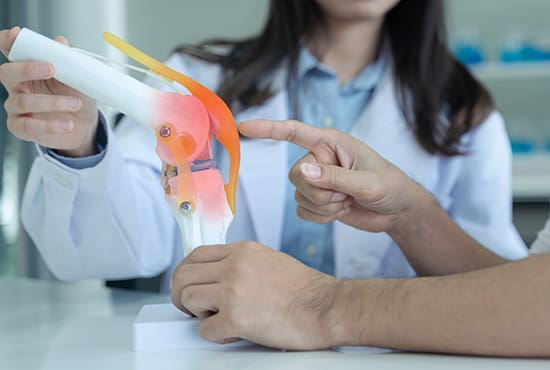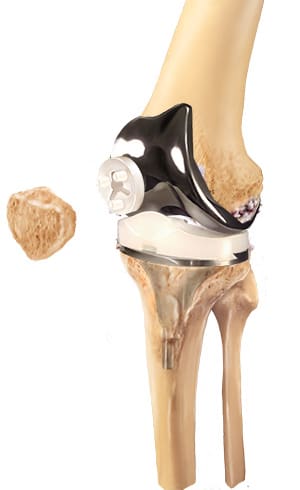What Is It?
In our Waterloo, Independence, and Vinton locations, we perform total Knee Replacement surgery. This is meant to replace damaged and degenerative portions of the knee joint with higher functioning, prosthetic components.
Your knee joint is formed at the meeting place of the thighbone (femur), shinbone (tibia) and kneecap (patella). At the end of each bone, where it would touch others, articular cartilage and other tissue works to protectively absorb shock and encourage free movement. The large thigh muscle strengthens and supports the joint which is held together by just four durable ligaments. The Lateral Collateral Ligament (LCL) and Medial Collateral Ligament (MCL) are located at the side of your knees and work to control sideways bending while limiting awkward, unusual movements. The Anterior Cruciate Ligament (ACL) and Posterior Cruciate Ligament (PCL) are located inside the knee joint and work together to control and stabilize your knee’s flexion and extension. The ACL is the most well-known and significant of the four ligaments, as it runs diagonally through the middle of the knee joint, providing protection and complete rotational stability.


